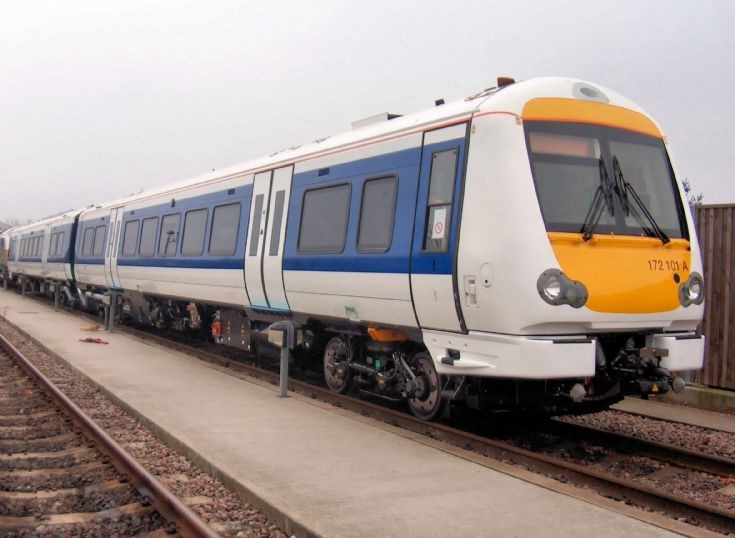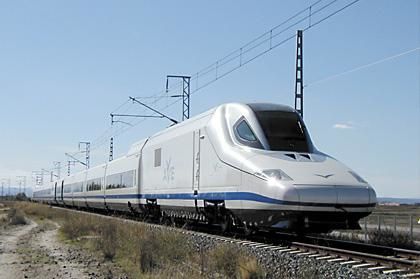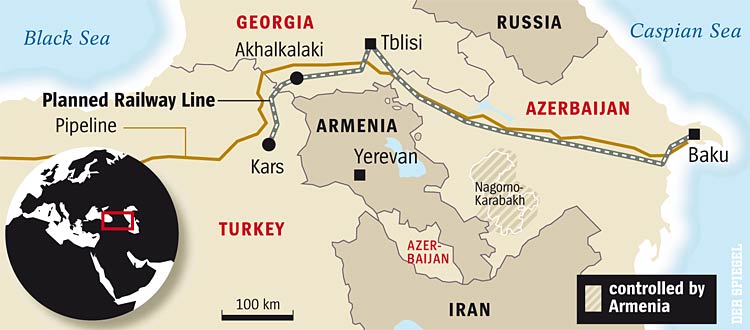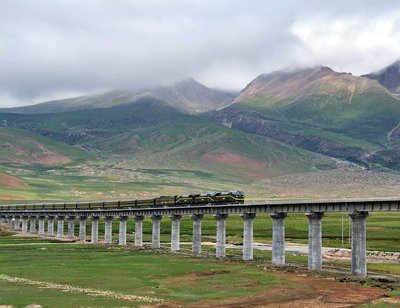The Qinghai-Tibet Railway, the world's highest plateau railway, has stood safety and environmental tests while boosting regional economic growth over the past five years.
Friday marks five years since the railway opened.
The 1,956-km rail link running from Golmud in the northwestern Qinghai Province to Tibet's regional capital Lhasa has transported more than 41 million passengers and 180 million tonnes of cargo since it opened on July 1, 2006, sources with the railway operator said Thursday.
Last year, the railway carried 9.7 million passengers and 48 million tonnes of goods, compared with 6.4 million people and 24 million tonnes of goods in 2006, said Miao Xiaohua, deputy manager of Qinghai-Tibet Railway Company.
Tibet Autonomous Region received 6.8 million tourists in 2010, 3.8 times the 2005 figure, said Wang Songping, Tibet's deputy tourism official.
"Last year, 42 percent of the tourists traveled by train, a sharp rise from 26 percent reported in 2006," Wang said.
By the end of 2015, Tibet expects to host 15 million tourists annually and post an annual tourism revenue of 18 billion yuan (2.8 billion U.S. dollars), he said.
ADDRESSING ENVIRONMENTAL CONCERNS
The Qinghai-Tibet Railway passes through three national nature reserves including Hoh Xil, a major habitat for the critically-endangered Tibetan antelope.
Perched at an average altitude of 4,500 meters, Hoh Xil reserve contains the largest area of uninhabited land in China and is dubbed the country's "last haven for wild animals."
Pregnant antelope cows, often followed by young members of the herd, migrate to Hoh Xil every June to give birth, and leave the reserve in September.
"The number of antelopes that make the migration has apparently risen in recent years," said Xiao Penghu, deputy chief of Hoh Xil Nature Reserve Administration.
Xiao said some people had thought the roaring trains might scare away the antelopes and disrupt their breeding pattern, but in fact their population in the Hoh Xil region had increased from around 50,000 in 2006 to more than 60,000 currently.
Thirty-three special passageways were built along the Qinghai-Tibet Railway enabling animals to follow their normal migration routes unhindered.
"I see herds of Tibetan antelopes going through these passageways every summer," said truck driver Li Jingui who drives along the route every year.
The Qinghai-Tibet Plateau used to have millions of Tibetan antelopes, but hunting and destruction of their habitat had decimated the population over the past decades.
Poachers hunt the antelopes for their hides as it can be sold and made into shahtoosh shawls, a luxury item that requires three to five antelope skins to make just one shawl.
Since 1979, the animal has been recognized as an endangered species and protected under the Convention on the International Trade in Endangered Species.
"We've been watching out for potential pollution all these years," said Wang Zhiwei, a maintenance engineer with Qinghai-Tibet Railway Company.
Wang and his colleagues monitor all the 15 sewage treatment stations along the Golmud-Lhasa section of the railway every month to ensure sewage is treated properly and causes no pollution to the plateau air and water.
All the stations use clean energy to minimize emissions.
Meanwhile, railway authorities have worked to preserve and expand vegetation along the route, which is surrounded by 675 km, or 5.6 million square meters, of trees.
In 2008, the railway was named as an "environment-friendly project," China's top environment award.
SAFE OPERATION
Before the railway was built, people questioned its safety, fearing the permafrost along the route could never support tracks and trains and lack of oxygen could be fatal for the workers and passengers.
"After five years of operation, we have observed no changes in the frozen earth along the route," said Wang Zhiwei.
Ministry of Railways, Ministry of Health and the local governments and Qinghai and Tibet have worked effectively to prevent altitude diseases and the rat plague.
"No railway worker died of altitude disease and no rat plague had spread in the trains to and from Lhasa over the past five years," said Miao Xiaohua, deputy manager of the Qinghai-Tibet Railway Company.
Meanwhile, all the passengers who fell sick during the journey received timely treatment, he said.
ECONOMIC BOOM
The railway to Lhasa has proven effective in boosting the overall development in both Qinghai Province and Tibet.
Official figures show Qinghai's GDP soared from 64.1 billion yuan in 2006 to 134.2 billion yuan last year.
Meanwhile, Tibet's GDP rose from 34.2 billion yuan to 50 billion yuan, an average annual growth of at least 10 percent.
The railway has brought a surge of tourists, giving a boost to the local tourism and hospitality industries.
La Xuecai, a Muslim Hui who runs a restaurant in a remote town near Hoh Xil, said the railway had turned the formerly obscure place into a "boom town."
Tibetan businessman Tobgye said the surge of tourists following the railway's opening has brought a business boom for his theme restaurant in Lhasa that features Tibetan food and folk art performances.
"Many of my Tibetan friends and neighbors are also benefiting from the railway, running home inns and eateries."
The rail link to Lhasa is a starting point towards a more comprehensive railway network in the underdeveloped western China.
An extension of the railway from Lhasa to Xigaze, Tibet's second largest city, began last year and will be completed before the end of 2015.
Tibet will start building another extension of the plateau railway, from Lhasa to Nyingchi, in the next five years, according to the region's plan for economic and social development in the 2011-2015 period.
source: china.org.cn










